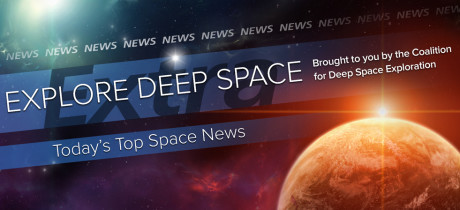In Today’s Deep Space Extra… U.S. Senate joins House in passing a 2017 appropriations bill that includes an increase in NASA spending.
Human Deep Space Exploration
Senate joins House in approving FY2017 appropriations bill
Spacepolicyonline.com (5/4): The U.S. Senate on Thursday approved an omnibus appropriations bill for 2017 that includes $19.653 billion for NASA, a $368 million increase over 2016. President Trump has indicated he will sign the bill, which will prevent a government shutdown at midnight Friday. The measure, which was passed by the House by a wide margin on Wednesday, cleared the Senate with bi-partisan support. The measure appropriates government spending through September 30, the end of the current fiscal year.
NASA’s Ellen Ochoa: We are going deeper into space than ever
U.S. News & World Report (5/4): Ellen Ochoa, the first Hispanic female astronaut, leads NASA’s Johnson Space Center. A Stanford educated electrical engineer, Ochoa launched five times as a shuttle astronaut. This month she will be inducted into the U.S. Astronaut Hall of Fame. Johnson leads the development of NASA’s Orion capsule, the spacecraft that is to launch and land astronauts selected for future missions of deep space exploration.
Space Science
Building rovers that can detect life and sequence DNA on other worlds
Universe Today (5/3): Last year, NASA astronaut Kate Rubins demonstrated a capability to sequence DNA aboard the International Space Station. Scientists believe the portable technologies that Rubins experimented with can be arranged to support possible in-situ efforts to detect life on Mars and other possible habitable environments in the solar system, such as Jupiter’s moon Europa and Saturn’s moon Enceladus. Recent development in the field were explored this week during a Future in Space Operations symposium, Towards In-Situ Sequencing for Life Detection.
Coming soon? Scientists discuss potential breakthroughs in alien-life search
Space.com (5/4): At a recent Stanford University conference, astrobiologists presented some encouraging developments for the discovery of Earth-like planets beyond the solar system, within 30 light years, or so. Low mass stars, which there appear to be many in the neighborhood, each seem to host at least one habitable zone planet. NASA’s Transiting Exoplanet Survey Satellite, which is to launch by mid-2018 as a follow-on to the Kepler Space Telescope, will look for more. Those in turn could be targets for study by the James Webb Space Telescope, which is to launch in late 2018.
New Hubble telescope photo of a galaxy cluster will make your troubles feel small
Mashable (5/4): NASA’s Hubble Space Telescope is wrapping up the last in a series of “deep field” views of the distant universe augmented by gravitational lensing, a technique in which the strong gravitational force of an interim galaxy cluster magnifies the imagery of the older star systems much deeper in space.
The mystery of Pluto’s beating heart
Space.com (5/4): Pluto’s heart shaped surface feature and those that surround it point to an internal heat source on the distant minor planet that was visited by NASA’s New Horizons mission spacecraft with a flyby in July 2015.
Low Earth Orbit
Arianespace tallies up another successful mission with launch of two telecom satellites
Spaceflight Insider (5/4): A pair of European communications satellites launched Thursday atop an Ariane 5 launch vehicle from French Guiana. The lift-off closed out a launch suspension at the European launch complex prompted by wage issues and protests over living conditions near the European space port. The satellites will support telecommunications in Brazil and South Korea.
Coalition Member Spotlight
The International Space Station (ISS) serves two critical roles for pioneering space development. It is our gateway to human exploration of the solar system and an incubator for the commercial development of space beyond telecommunications. Made In Space is a small business that has capitalized on the unique capabilities of the ISS to spur technological and business innovations for both. Click here for a special blog about our featured Coalition member.

